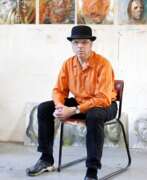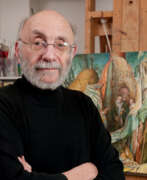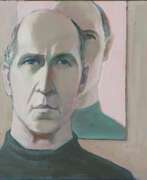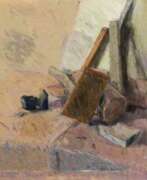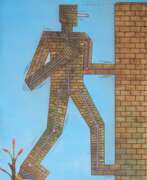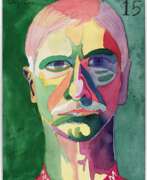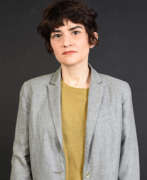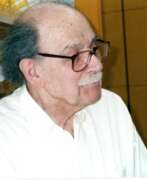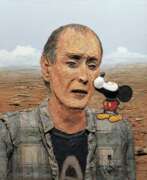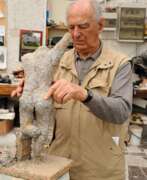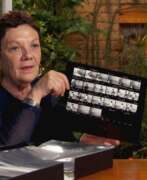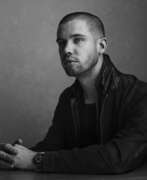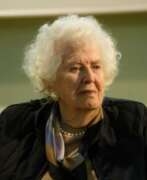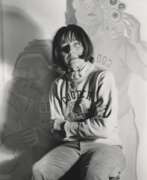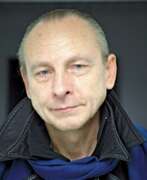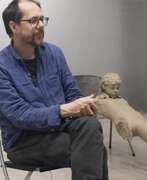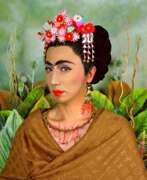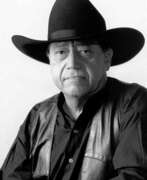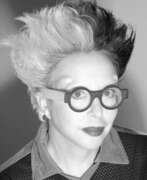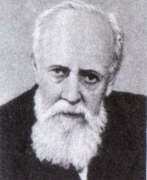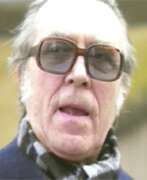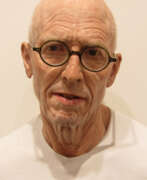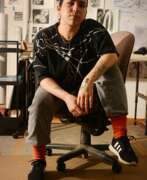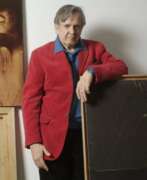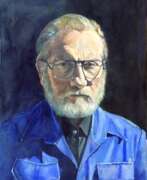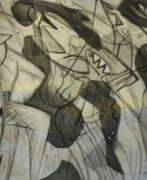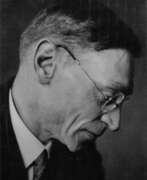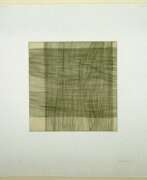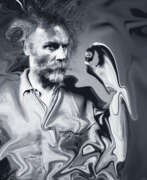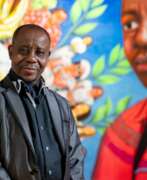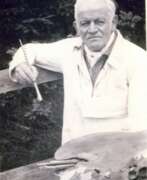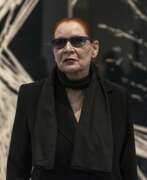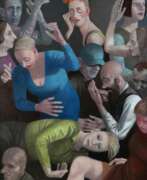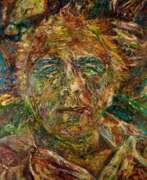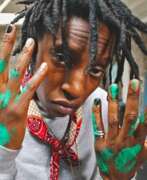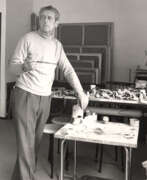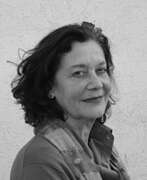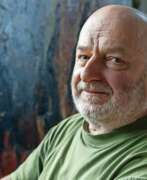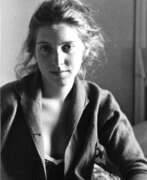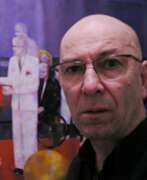Self-portrait Contemporary art
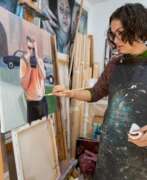

Nuria Farre Abejon is a Spanish hyperrealist artist living and working in Barcelona, Spain.
Her often hyper-realistic works revolve around issues that concern her as a young woman: anxiety, melancholy, family, memories and identity. At first, Nuria created translucent paintings through which she represented the duality between life and death. Later she explored self-portraiture, and today Nuria tries to explore her present through photographs from her family album, through which she creates interesting visual oil collages.
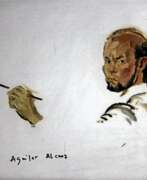

Frederico Aguilar Alcuaz is a Filipino abstract painter, sculptor and ceramist, and master tapestry artist.
He studied painting at the University of the Philippines' School of Fine Arts, then lived and worked both in the Philippines and Spain, and in Brno, Czech Republic, he worked extensively on tapestries.
Alcuaz has earned international acclaim with his vivid abstract works in various genres and techniques, and he has exhibited extensively internationally.
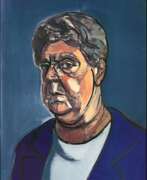

Leland Bell, an American painter born in 1922 and passed away in 1991, is a figure whose artistic journey and output stand as a beacon of individuality and depth in the 20th-century art world. Bell's dedication to painting was profound, shaping a career that remained largely self-taught yet significantly influential. His work, characterized by a passionate engagement with both abstract and figurative painting, represents a unique blend that defied the dominant trends of his time, making him a crucial figure for collectors and art enthusiasts.
Bell's artistic signature is evident in his choice of subjects—still life, portraiture, and figure composition—handled with a distinctive blend of abstract principles and figurative clarity. His paintings are recognized for their bold contour lines, vibrant planes of color, and dynamic compositions, revealing a singular vision that bridges the abstract with the tangible. This approach allowed him to explore the depth of human and thematic elements with an intensity and psychological complexity, particularly seen in his self-portraits and family group scenes, which often carry a mythic quality, elevating everyday existence to the level of allegory.
Significant in Bell’s legacy is his ability to convey the essence of his subjects with a sculptural weight, granting them a presence that is both immediate and timeless. His paintings, such as the "Family Group with Butterfly" (1986-90) and his series of self-portraits, demonstrate a mastery of form and space that invites viewers into a deeply personal yet universally resonant world. Bell's influence extended beyond his canvas through his roles as a teacher and lecturer, where he passionately advocated for the artists he revered, contributing to a rich educational legacy that complemented his artistic achievements.
Bell's works are held in prestigious collections and have been the subject of retrospective exhibitions, such as at the Phillips Collection in Washington, DC, highlighting his enduring impact on American art. His dedication to exploring the nuances of form, color, and composition has left a lasting mark, ensuring his place among the notable artists of his generation.
For collectors and experts in the field of art and antiques, Leland Bell's oeuvre offers a compelling study in the power of painting to convey complex human emotions and narratives. His work remains a testament to the enduring relevance of figurative art in the modern era, and his contributions continue to inspire new generations of artists and collectors alike.
To stay informed about new discoveries, sales, and auction events related to Leland Bell's work, signing up for updates is a practical way to ensure you don't miss out on opportunities to engage with the legacy of this remarkable artist. This subscription is a business-like avenue to keep abreast of events that celebrate Bell’s artistic achievements and offer insights into his profound impact on the art world.
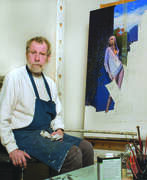

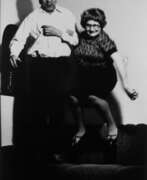

Bernhard Johannes Blume is a German art photographer.
Bernhard Blume and his wife Anna Blume created many staged black and white photographs in which they themselves took part. They are considered among the pioneers of staged photography.
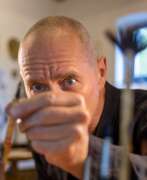

Micha Brendel is a German artist living and working in Hohendorf/Lower Lusatia.
Brendel started his career as an assistant artist, then studied at the Kunsthochschule Berlin-Weißensee and at the HfBK Dresden. He was one of the founders of the Auto-Perforations-Artisten association and editor of independent magazines for artists.
Brendel's early works centered on self-portraits and photographs of his own body, distorted with photographic techniques. He also made extensive use of organics, including animal bones and skin, in the creation of a wide variety of works. A common theme is self-destruction and alienation, shock and disgust. Brendel wrote detailed accounts of his creative process that became the basis for books.
Brendel's work, which often crosses boundaries, includes drawings, photographs, inscriptions, artist's books, taxidermy objects, installations and performances. He is currently intensifying his work with writing and nature and curating exhibition projects.


James Brown was an American-born painter active in Paris and Oaxaca, Mexico. He was most well known in the 1980s for his rough painterly semi-figurative paintings, bearing affinities to Jean-Michel Basquiat and East Village painting of the time, but with influences from primitive art and classical Western modernism. His work has taken on several styles over the years but maintains a hand-made look combining concerns of the modernist tradition with motifs and spiritual interests from tribal art. Much of his work is a non-realistic but contains depictions or signs of recognizable faces or objects. However, the line between representation and abstraction is often a difficult one in his work. Besides paintings Brown has also produced sculptures and series of prints at various points in his career, and in the 1990s started to heavily utilize collage.
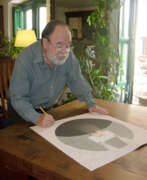

Alfredo Castañeda was a Mexican surrealist painter.
Castañeda had been interested in painting and drawing since childhood, but first became an architect, earning a degree in architecture from the University of Mexico. During his studies, he continued to paint as a hobby, which he became more and more serious about over the years. At university, Alfredo became acquainted with the painter, sculptor and architect Matthias Goeritz, as well as the work of René Magritte. Both played a huge role in the young artist's worldview.
After his studies, Castañeda worked as an architect and in 1969 had his first solo exhibition at Galeria de Arte Mexicano. His work has also been shown internationally numerous times in the United States and in many Latin American countries, including Mexico. His work is collected in collections and museums throughout the Americas, Europe and Asia.
Alfredo Castañeda is known for his surrealist paintings, often portraits. The same character appears in many of his paintings, sometimes revealed in multiple versions of himself. This person (often resembling the artist himself) seems to be engaged in an endless dialog with himself, involving the viewer as well.
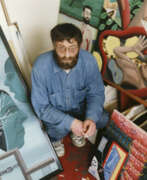

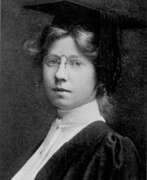

Imogen Cunningham was an American photographer known for her botanical photography, nudes, and industrial landscapes. Cunningham was a member of the California-based Group f/64, known for its dedication to the sharp-focus rendition of simple subjects.
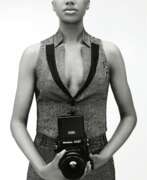

LaToya Ruby Frazier is an American visual artist, renowned for her profound work that delves into social justice, cultural change, and the American experience. Born in 1982 in Braddock, Pennsylvania, Frazier utilizes various media, including photography, video, and performance, to explore themes of industrialism, environmental justice, and human rights. Her art, deeply rooted in collaborative storytelling, often portrays her family and community, offering a lens into the lived experiences of working-class families amid societal and environmental challenges.
Her notable series "The Notion of Family" explores her family's life in Braddock, revealing the impacts of industrial decline on the community and environment. This work not only highlights LaToya Ruby Frazier's personal narrative but also serves as a broader commentary on race, class, and the American industrial landscape. Her commitment to social documentation is further exemplified in projects like "Flint is Family," where she immersed herself in Flint, Michigan, to document the water crisis's impact on local families.
LaToya Ruby Frazier's exhibitions span across prestigious venues in the US and Europe, reflecting her influence and recognition in the art world. Her works are part of esteemed collections like The Museum of Modern Art and the Whitney Museum of American Art in New York. Frazier's accolades include a MacArthur Fellowship, demonstrating her significant contributions to contemporary art and social activism.
For art collectors and experts, Frazier's work offers a compelling intersection of art, activism, and storytelling, providing insightful perspectives on pressing social issues through the lens of personal and community narratives.
To stay informed about LaToya Ruby Frazier's work and related updates, including new product sales and auction events, subscribing to updates is a valuable opportunity for enthusiasts and collectors alike to engage with her impactful artistry and advocacy.


Gregory Joseph Gillespie was an American magic realist painter.
Gillespie became known for meticulously painted figurative paintings, landscapes, and self portraits, often with a fantastical element. Many of his early works were made by painting over photographs cut from newspapers or magazines, transforming the scenes through photographic collage and by adding imaginary elements. In his later work he abandoned his early fascination with creating hyper-realized realistic imagery, instead focusing on a looser and more expressive style. He often combined media in an unorthodox way to create shrine-like assemblages.
Gillespie's work is in the collections of the Whitney Museum, the Arkansas Arts Center, and the Butler Institute of American Art, among others.
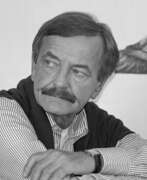

Rolf Gith is a German painter, draughtsman and designer. He studied painting at the University of Fine Arts in Hamburg. He was involved in teaching at various institutions of higher education. Git is a member of the Association of German Artists.
Rolf Git worked in different genres: he was fond of nudes, painted portraits of the people around him as well as numerous self-portraits. Since 1996 colour and light have been central themes in his work.
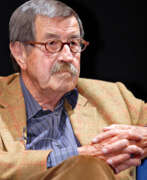

Günter Wilhelm Grass was a German novelist, poet, playwright, illustrator, graphic artist, sculptor, and recipient of the 1999 Nobel Prize in Literature.
Grass is best known for his first novel, The Tin Drum (1959), a key text in European magic realism. It was the first book of his Danzig Trilogy, the other two being Cat and Mouse and Dog Years. His works are frequently considered to have a left-wing political dimension, and Grass was an active supporter of the Social Democratic Party of Germany (SPD). The Tin Drum was adapted as a film of the same name, which won both the 1979 Palme d'Or and the Academy Award for Best Foreign Language Film. In 1999, the Swedish Academy awarded him the Nobel Prize in Literature, praising him as a writer "whose frolicsome black fables portray the forgotten face of history".


Oswaldo Guayasamín is an Ecuadorian painter, muralist and sculptor.
Oswaldo's father was an Indian, and the family was very poor, but the future artist was educated at the School of Fine Arts of Quito. Soon, literally in two years, he created a cycle of 103 paintings dedicated to the life of oppressed Indians in Latin America. Oswaldo Guayasamin also painted portraits of famous contemporaries, including Fidel Castro, whom he admired. He also created murals, frescoes, landscapes, and symbolic images.
The artist's works were exhibited in Paris, Moscow and in Leningrad, among other cities around the world, with amazing success. In 1957, at the Fourth Biennial in São Paulo, he was named the best South American artist.
Guayasamin was also a passionate collector. In 1978, the then famous artist donated to the State of Ecuador some 500 colonial paintings and sculptures, pre-Columbian archaeological sites, Goya and Picasso paintings that he had collected.


Ulrich Hachulla is a German painter and graphic artist, representative of the New Objectivity movement, who lives and works in Leipzig.
He was educated at the Academy of Fine Arts in Leipzig and, in addition to painting, has mastered many graphic techniques.
Hahulla's portraits and self-portraits depict a man in solitude, unsociable, coldly detached - these are numerous types of the respective times. The artist also creates paintings with mythological and allegorical references.
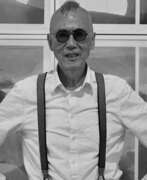

Han Hsiang-ning is a Taiwanese-American artist. Han has participated in many prominent museum exhibitions. He often uses spray painting and paints photo-realistic street scenes. In 1961, he joined the "Fifth Moon Group". He began abstract form oil painting, and his works first appeared in the magazine Pen Review. In 1963 he began working with roller and stencils on rice paper, still abstract, emphasizing form and space structure. In 1969 he began spray painting works using acrylic paint on canvas, created the "Invisible Image" series. In 1971, in the process of spray gun painting, found how to create different combinations of sprayed color dots, a form of pointillism. In 1971 he continued the spray gun technique, but began using New York city-scenes as a subject and his camera as sketching tool. In 1972 he launched studies on industrial scenes with vivid images. He completed his first self-portrait in 1981. In 1983 he began using brushes to paint watercolor and ink on paper. His subjects being street crowds and bird's eye views of intersections of New York streets.
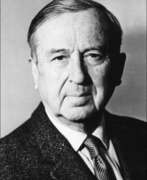

Mykola Petrovich Hlushchenko, a prominent Ukrainian post-impressionist painter, was born in 1901 in Novomoskovsk, Russia, and is celebrated for his diverse artistic contributions that span across various European landscapes, still life, nudes, and notable portraits. His early exposure to art in Yuzivka (now Donetsk), and further education at the Academy of Art in Berlin in 1924, laid the foundation for his illustrious career. Hlushchenko's work caught the attention of French critics soon after he moved to Paris in 1925, marking his transition from the New Objectivity style to post-Impressionism.
Hlushchenko's involvement with the Association of Independent Ukrainian Artists in the early 1930s, and his exhibitions across major European cities and the United States, underscored his role as a leading figure in Ukrainian post-impressionism. His work was characterized by vibrant color use and a unique blend of styles influenced by his time in Germany, France, and later in the Soviet Union. Throughout his life, Hlushchenko's art reflected his extensive travels and deep appreciation for landscapes, earning him numerous awards including the Shevchenko National Prize in 1972.
For art collectors and enthusiasts, Hlushchenko's pieces not only represent the zenith of Ukrainian post-impressionism but also embody the artist's rich, multifaceted life experiences. His paintings, such as the portraits of Oleksandr Dovzhenko and Volodymyr Vynnychenko, along with commissioned works for the Soviet government, showcase his adaptability and mastery over his medium.
To stay informed on Mykola Petrovich Hlushchenko's works and related auction events, signing up for updates is advisable. This subscription ensures you're always in the loop for new sales and exhibitions, enriching your collection with the vibrant legacy of a distinguished Ukrainian artist.
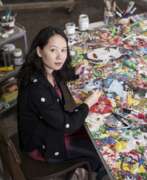

Ye Hongxing (Chinese: 叶红杏) is a Chinese artist.
Ye Hongxing's work uses traditional Chinese motifs and contemporary elements to create visually sublime scenes that impose an opposition of calm and complex madness. Using the traditional Western medium of oil paint, she creates attractive self-portraits with eyes closed and a calm expression superimposed on multi-coloured currencies or vibrant decorative and sinuous floral patterns derived from traditional Chinese porcelain.
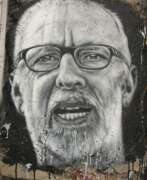

Jörg Immendorff was a German painter and sculptor, stage designer and decorator, and a member of the New Wild movement.
Immendorff painted in cycles that often lasted for years and were political in nature. His series of sixteen large paintings, Café Deutschland (1977-1984), is well known. In these colorful paintings, numerous disco lovers symbolize the conflict between East and West Germany.
Immendorff prepared several stage productions and designed sets for the operas Elektra and The Rider's Voyage. 25 of Immendorf's paintings were selected in 2006 for the illustrated Bible.
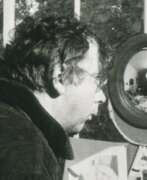

Horst Janssen was a German graphic artist, printmaker, poster and illustrator. He created many drawings, etchings, woodcuts, lithographs, and woodcuts.
There is a museum dedicated to his legacy in Horst Janssen's hometown of Oldenburg. His works are represented internationally in major museums.
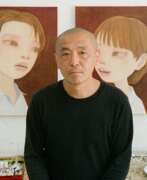

Hideaki Kawashima is a Japanese artist who lives and works in Tokyo.
After graduating from the University of Tokyo, he underwent two years of Buddhist temple training before beginning his career as an artist in 2001.
Hideaki Kawashima uses portrait painting and self-portrait masks to show the ambiguity of human life. His characters with expressive eyes express a spectrum of emotions: fear, desire, anxiety, longing. Yet these emotions are ambiguous. Kawashima brings touches of folklore, mythology and surrealism to androgynous faces.
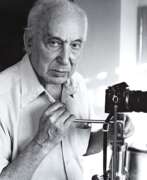

André Kertész, born Andor Kertész, was a Hungarian-born photographer known for his groundbreaking contributions to photographic composition and the photo essay. In the early years of his career, his then-unorthodox camera angles and style prevented his work from gaining wider recognition. Kertész never felt that he had gained the worldwide recognition he deserved. Today he is considered one of the seminal figures of photojournalism.
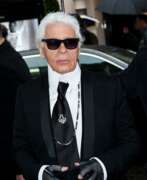

Karl Otto Lagerfeld is a German fashion designer, designer, photographer, collector and publisher.
Karl found himself in the fashion world by chance, as he planned to work as an illustrator. At the age of 21, he entered the 1954 International Woolmark Prize and won first place for his sketch of a coat, which launched his career. For the next 65 years, fashion remained the foundation of his work, although he spent his life actively expressing himself in other areas of art.
In 1987, Karl shot his first advertising campaign and developed a passion for photography. In 1999, he opened his own photography studio in Paris, where he has taken countless images of the world's greatest figures in art and fashion. Many of Carl's photographs have also been used in art books. Karl was also a master of self-portraits: throughout his life he photographed and painted his iconic image.
A passionate bibliophile (his personal library numbered 300,000 volumes), Lagerfeld merged his photography studio with the 7L bookstore and later opened EDITIONS 7L, a publishing house specializing in books on design and photography. He was also involved in various interior design and architecture projects.
In 1965 Lagerfeld took over the Italian fashion house Fendi, where he created collections of leather and fur garments, and in 1983 he became the artistic director of the French house Chanel - with these companies he had lifetime contracts. In 1984, Lagerfeld founded his own fashion house, Karl Lagerfeld Impression.
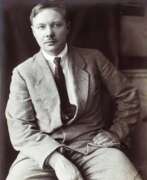

Mikhail Fyodorovich Larionov (Russian: Михаил Фёдорович Ларионов) was a distinguished Russian avant-garde artist, painter, and founder of the Rayonism movement, whose contributions significantly influenced early 20th-century modern art. Born in Tiraspol, then part of the Russian Empire, Larionov's pioneering spirit in both painting and stage design left an indelible mark on the realms of culture and art. His dedication to exploring new artistic techniques and expressions made him a central figure among Russian artists, pushing the boundaries of traditional painting and engaging in innovative artistic dialogues.
Larionov's artistry was not confined to a single genre; he was instrumental in the development of Russian avant-garde art, exploring and contributing to various movements such as Neo-Primitivism before founding Rayonism. This movement, which he developed alongside Natalia Goncharova, his lifelong partner and fellow artist, sought to express the dynamic interplay of light and color, breaking away from the conventional forms and perspectives of the time. Larionov's work in this area highlighted his belief in the power of abstract forms and the potential of art to capture the energy and rhythm of modern life.
His contributions are celebrated in major museums and galleries worldwide, with his works being pivotal in understanding the evolution of modern art. Notable works by Larionov are held in prestigious institutions such as the Russian Museum in St. Petersburg, the Tretyakov Gallery in Moscow, and the Museum of Modern Art in New York, underscoring his international recognition and the lasting impact of his artistic innovations.
For collectors and experts in art and antiques, Mikhail Fyodorovich Larionov's legacy offers a rich field of study and appreciation. His works not only embody the innovative spirit of early 20th-century art but also represent a bridge between Russian cultural heritage and the broader currents of European modernism. To stay informed about new product sales and auction events related to Mikhail Fyodorovich Larionov, we invite you to sign up for updates. This subscription is a valuable resource for enthusiasts keen to explore the depth and diversity of Larionov's contributions to modern art.


Li Tianbing is a Chinese artist. Li Tianbing’s body of work is characterized by the dual influence of the Far-East and the West: the first being a legacy of Chinese painting imbued with Taoism, the second coming from the teachings of art professors such as Vladimir Veličković, Christian Boltanski and Giuseppe Penone while he studied at the Fine Arts School in Paris. His work was marked by a pivotal moment in 2006, when he compiled a family album comprising portraits of him as a child, for the purpose of denouncing the one-child policy, thus depicting an imaginary family through replications of himself. He henceforth developed a new visual language in which portraits abound, creating through his art a dialog between reality, imagination and fantasy. When working on his compositions, Li Tianbing essentially uses oil paint; however, another of his main means of expression remains drawing with Indian ink. He also enjoys working with watercolours, alternating between Chinese and European paintbrushes.
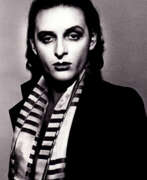

Urs Lüthi is a Swiss eclectic conceptual artist.
He graduated from the School of Applied Arts in Zurich and has experimented with various styles and techniques, including photography, sculpture, performance, silkscreen, video and painting.
Urs Lüthi is known for placing his body and alter ego at the center of his artworks, trying to understand himself and question reality.
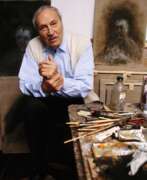

Zoran Anton Mušič is a Slovenian painter and graphic artist who has worked in Italy and France.
Zoran studied painting in Maribor and Zagreb, then went to Madrid and Toledo for a year, where he studied and copied works by Goya and El Greco. At the end of 1944, he became a prisoner of the Nazi concentration camp Dachau, where he spent several months. He survived and even made about two hundred drawings on paper in the camp. After his liberation, Mušić moved to Venice and later to Paris.
Zoran Mušić was the only artist of Slovenian origin who managed to establish himself in the elite cultural circles of Italy and France, especially in Paris in the second half of the 20th century, where he lived most of his later life. He painted landscapes, still lifes, portraits and self-portraits, as well as horror scenes from the Dachau concentration camp and Vedute Venice. In 1970-1971, the artist created a pictorial reminiscence cycle "We are not the last", dedicated to concentration camp prisoners and became the most famous of his works.
The figures in Mušić's paintings appear out of empty space and seem unfinished. The colors of his self-portraits are the harsh colors of the desert, eliminating the superfluous and reducing to a minimum. These paintings are evidence of the artist's search for answers to the basic questions of human existence.


Jerry Duane Ott is an American artist. He is best known for his photorealism work and creative use of painting surfaces, he was a leading painter in the photo realist school of painting that emerged in the 1960s. Jerry Ott is also a true master airbrush artist. In the early 1970s JOtt received a great deal of attention in his career as the one of dealing exclusively with the nude figure. One of his latest technical development are paintings wrapped across two- and three-dimensional surfaces. They range from drawings a few inches wide to sculptural assemblages more than five feet tall and eight feet long. Ott's work has found international acclaim. His realistic paintings appear in the art capitals of Europe, Japan and as far a field as New Zealand.
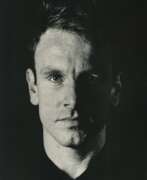

Jack Pierson, a contemporary American artist born in 1960 in Plymouth, Massachusetts, has carved a distinctive niche in the realms of photography, sculpture, and art. His association with the Boston School, alongside notable figures like Nan Goldin, David Armstrong, and Mark Morrisroe, underscores his significant influence on contemporary art. Jack Pierson's oeuvre is renowned for its exploration of the emotional undercurrents of daily life, ranging from romantic attachment to the idealization of wanderlust.
His practice encompasses a broad spectrum of media, including photography, sculpture, installation, painting, and found objects, through which he delves into life's varied emotional landscapes. Particularly striking are his large-scale wall sculptures composed of letters in diverse sizes and materials, juxtaposed with the hazy, soft-focus effect of his photographic works. These photos, reminiscent of road movies, capture the essence of a rapturous journey across the American landscape, while his word pieces rooted in nostalgia critique the American Dream's underbelly.
Jack Pierson's art does not merely valorize the American Dream; instead, it reveals its more complex, often melancholic dimensions. His word pieces, sourced from everyday vernacular and infused with historical, political, and cultural references, serve as a poignant reminder of Hollywood's bygone era and engage with contemporary philosophical ideas. His works are a testament to the power of language and material in evoking profound cultural and personal reflections, embodying an American variant of concrete poetry.
Currently residing in both New York City and Southern California, Jack Pierson's influence extends globally, with his works included in prestigious collections such as the Museum of Contemporary Art North Miami, the San Francisco Museum of Modern Art, and the Museum of Modern Art in New York. His career has been marked by significant exhibitions worldwide, demonstrating his pivotal role in shaping contemporary art discourse.
For collectors and experts in art and antiques seeking to explore the nuanced landscapes of contemporary art, Jack Pierson's work offers a compelling study in emotion, nostalgia, and cultural commentary. His ability to bridge the gap between various forms of artistic expression makes him a key figure in understanding the trajectory of modern art.
To stay updated on Jack Pierson's latest works and exhibitions, consider signing up for updates. This subscription is a gateway to the evolving landscape of contemporary art, offering insights and access to one of the most profound voices in today's art world.
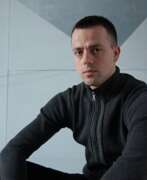

Zbigniew Rogalski is a Polish installation artist and photographer.
He is considered not just a painter, but a director of paintings, because he easily mixes painting and photography, taking advantage of both. As a result, Zbigniew Rogalski achieves illusion and optical effects in his creations, whether portrait or landscape.




Salomé (born as Wolfgang Ludwig Cihlarz) is a German artist. His paintings are in renowned museums and collections all over the world. Salomé became known as one of the members of the art group Junge Wilde (Wild Youth) or Neue Wilde (New Wild Ones). He also is recognized as a sculptor and Punk singer.
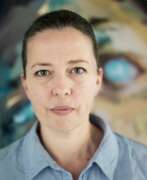

Jennifer Anne Saville is a contemporary British painter and an original member of the Young British Artists. Saville works and lives in Oxford, England and she is known for her large-scale painted depictions of nude women. Saville has been credited with originating a new and challenging method of painting the female nude and reinventing figure painting for contemporary art.
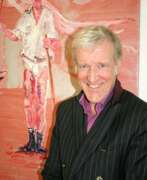

Peter Schmersal is a German painter who lives and works in his native city and in Berlin. His work is characterized by a stylistic variety. Schmersal studied graphic design in Wuppertal from 1971 to 1975 and then worked as a graphic designer. From 1978 he engaged in painting. In the mid-1980s, primarily still lifes, landscapes and architectural depictions were created. There is already a certain casualness to the motifs from this period, they appear in fleeting snapshots that are characterized by a fragmentary execution. The still lifes show classic subjects: flowers, fruits, dead animals and everyday objects such as bottles, serviettes, stools or tables. At the beginning of the 1990s, in addition to urban landscapes, there were above all examinations of the portrait, which is also often fragmented, not only from the front, but often also in an unusual top or bottom view, up to a physiognomic detail representation, for example the mouth and mouth eye area. Since the beginning of the millennium, the choice of motifs at Schmersal could hardly have been more heterogeneous. Due to the well-considered incoherence of individual motifs, Schmersal juxtaposes the most diverse types of authorship, style, genre and context of exploitation. In terms of motifs, there are still no self-imposed specific guidelines, but figures, still lifes and landscapes continue to dominate


Florian Süssmayr is a German artist.
In the early 80s Florian was a member of the punk movement Freizeit 81 and until 1984 performed with Lorenz Lorenz, worked as a cameraman and lighting technician. And since 1997 he has been involved in visual arts. Self-portraits often play a central role in his paintings and are closely linked to the artist's biography.
Florian Süssmayr's works, often based on photographs, surprise the viewer with their painterly reproduction of various locations. His own image is recognizable only as a shadow or reflection - in a bathroom mirror or an elevator, on the street. The personality is not important, it is fleeting, and the objects surrounding it are brought to the foreground and drawn in much more detail. Florian Süssmayr has participated in numerous solo exhibitions in New York, Tokyo and Munich.


Konstantin Fyodorovich Yuon (Russian: Константи́н Фёдорович Юо́н) was a distinguished Russian artist and painter, celebrated for his multifaceted contributions to the world of art. Born in Moscow, Yuon's work spans painting, stage design, and teaching, making significant impacts across these fields. His artistry is renowned for blending traditional Russian motifs with innovative techniques, illustrating the rich tapestry of Russian culture and history.
Yuon's masterpieces are characterized by their vibrant use of color and light, capturing the essence of Russian landscapes and urban scenes with a unique lyrical quality. His notable works, such as "New Planet" and "The March Sun," showcase his ability to transcend the ordinary, offering viewers a glimpse into the ethereal beauty of everyday life. These pieces not only highlight his technical prowess but also his profound understanding of the emotional and cultural significance of his subjects.
Throughout his career, Yuon's influence extended beyond the canvas, as he nurtured the next generation of artists through his teaching. His dedication to the arts was recognized with prestigious awards, affirming his status as a pillar of the Russian art community. Today, his works are preserved in major museums and galleries, serving as a testament to his enduring legacy in the fields of painting and cultural heritage.
For collectors and experts in art and antiques, the legacy of Konstantin Fyodorovich Yuon offers a fascinating exploration into the evolution of Russian art. His works not only represent significant artistic achievements but also embody the cultural and historical narratives of their time. To stay informed on new product sales and auction events featuring Yuon's work, we invite you to sign up for updates. This subscription will ensure you're always in the loop on opportunities to own a piece of Russian art history.
